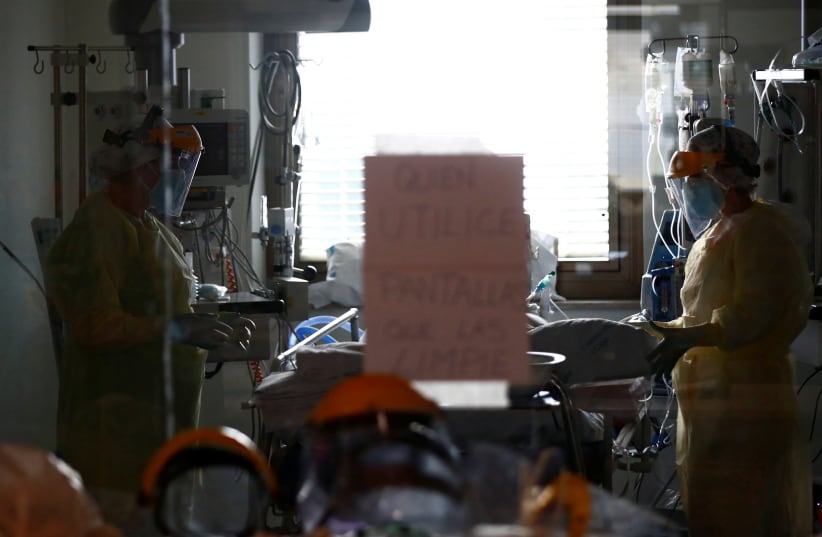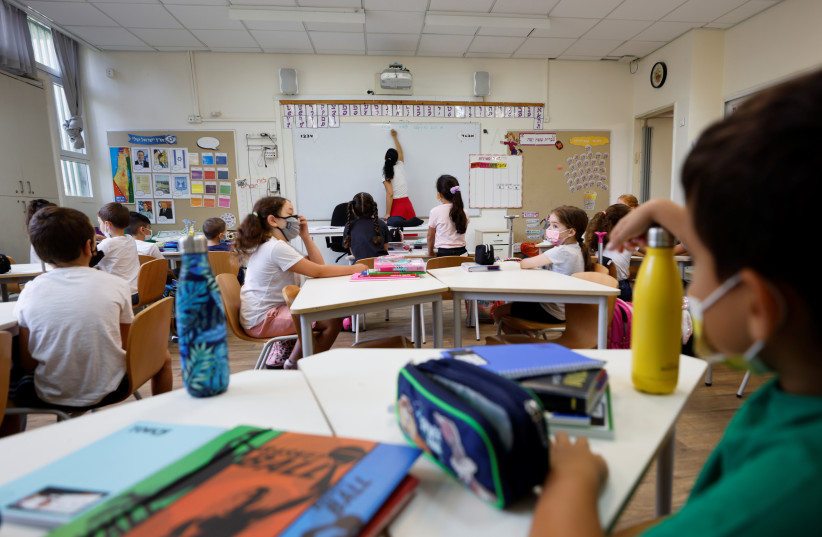A simple and inexpensive device saved my daughter’s life.
Last March, my daughter, a 43-year-old healthy mother of five, was the last person in her family to be infected with COVID-19. The others recovered quickly, but she clearly had a bad case of the disease. I asked my brother, a retired doctor who lives in the US, what steps we could take, to know if and when the virus actually attacked her lungs.
My brother suggested we use an inexpensive home oximeter, which looks like a large plastic clothespin and is attached to one’s middle finger, to monitor my daughter’s blood oxygen level. My brother’s suggestion was inspired by an April 2020 article written in The New York Times by Dr. Richard Levitan, a seasoned emergency medicine doctor, based on his experience with COVID-19 patients in New York City.
In the case of normal pneumonia, when a person’s lungs become infected, a lack of oxygen (“hypoxia”) can ensue, leading the person to feel shortness of breath, and prompting her to take action to receive help. But Dr. Levitan noted that many patients with COVID-19 pneumonia lack oxygen without feeling shortness of breath, so they do not ask for help until hypoxia is severe, and arrive at the hospital “too late,” with badly damaged lungs. He called this condition, seemingly unique to COVID-19 patients, “silent hypoxia.” Dr. Levitan suggested that COVID-19 patients identify this condition early by using home oximeters, in order to arrive at the hospital quickly to receive early treatment.
I bought an oximeter, gave it to my daughter, and asked her to call me if her blood oxygen level fell below the accepted value. Initially her blood oxygen level was normal, but after four days of fever, just when she seemed to be recovering, she called me at 11 p.m. one night and told me her blood oxygen level was much lower than normal. In fact, her blood oxygen level was so low it indicated a clinical emergency. “But I feel perfectly fine,” she told me.
At that moment, I knew she was suffering from silent hypoxia. Along with urgent messages from my brother and her own doctor, I was finally able to convince my reluctant daughter to hurry to the hospital’s emergency room. Her oxygen level was measured there and indeed found to be dangerously low. She was immediately given supplemental oxygen and steroids, and spent three days in critical care. Eventually she recovered. I shudder to think what might have happened if, the night she called me, she did not have a home oximeter or did not know how to use it.
ISRAEL AND other countries throughout the world are currently fighting a new wave of the pandemic, as a result of the Delta version of the virus. The numbers of infected patients, and therefore patients in severe condition, are increasing. What can be done to limit these numbers? Research studies around the world have supported the recommendation that self-monitoring with home oximeters can save many lives.
The results of this simple intervention are impressive. One of the best examples is the COVID Oximetry @home program (CO@h) program of the UK’s National Health Service. In June of this year, a comprehensive “evaluation of patient outcomes” study determined that this program, compared with a control group, demonstrated “considerably improved patient outcomes, reducing the odds of longer length hospital stays and mortality.” Other venues that have adopted similar policies include Germany, New York City, Vermont and the Mayo Clinic.
Self-monitoring of oxygen levels at home is effective because when COVID-19 patients (in coordination with their doctors) detect low blood oxygen levels – a sure sign of lung damage by the virus – relatively early, they can arrive at the hospital for prompt and timely treatment, before their illness becomes life-threatening.
For this reason, some health maintenance organizations (kupot holim) provide home oximeters to their COVID-19 patients. When this is not the case, patients should be encouraged to purchase these devices at their local pharmacies. If every household has a thermometer, shouldn’t every COVID-19 patient have access to a potentially life-saving oximeter?
Current public guidelines in Israel and abroad need to be changed to reflect the importance of home monitoring of blood oxygen levels. Today, they state that COVID-19 patients should seek emergency medical care or return to the hospital after being released only if they experience symptoms such as “trouble breathing” and “persistent pain or pressure in the chest.” These guidelines – including those of the Centers for Disease Control and Prevention (CDC) and the World Health Organization (WHO) – do not acknowledge the phenomenon of silent hypoxia. Moreover, waiting for symptoms to develop before seeking medical attention can result in arriving at the emergency department “too late” for effective treatment.
Oximetry monitoring is not a panacea. Some COVID-19 patients who are monitored for blood oxygen saturation will develop into serious cases. In addition, certain conditions (such as dark skin pigmentation, certain skin dyes and nail-polish) can complicate oximeter readings and need to be taken into account.
But knowledge is power. Thanks to what my family and I recently learned and thanks to the doctors who treated her, my daughter recovered from a near-fatal case of COVID-19. The main point is that the medical establishment in Israel and countries throughout the world need to explicitly publicize knowledge about the phenomenon of silent hypoxia and the use of home oximeters to the general public, as another measure to decrease the number of seriously ill patients and the preventable silent deaths from COVID-19.
The writer has a PhD in biology and science education. He has been a science educator at the Weizmann Institute of Science since 1982 and currently serves as academic advisor in its Department of Science Teaching. He lives with his family in Rehovot.

